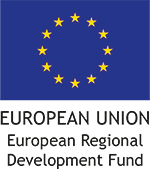Turku city plans to become coal-, emission- and waste-free by year 2040 – a strategic goal that seems quite challenging. To be waste free does not mean that zero waste is produced, but that waste is utilised in terms of recycling or energy. On top of city-specific goals, local and national goals for the utilisation of materials has been established.
When the responsibility of the waste management of packaging waste was handed over to the producers, as implemented by the change in the waste law, a condition of establishing 500 stations for recycling of plastics was set for the producers. Only nine of these stations are located in Turku city. The municipal waste management directives for southwestern-Finland were updated in 2017, stating that condominiums with over 20 apartments must include recycling bins for plastics in their waste management facilities. With changes as such, the city pursues the further increase the reuse of materials.
Unfortunately, regional directives for waste management and recycling of plastics have little effect on the littering of waterways. To reduce littering, about 2400 waste bins and containers have been installed by the city. About 100 are replaced or renewed annually and positioned in areas according to the wishes and feedback made by city inhabitants.
The systematic cleaning of common areas helps to reduce litter ending up in the ocean through city streams, Aura river, and storm drains.
Different methods to reduce marine littering has been tried. For instance, last year a sea bin (that collects trash from the water surface) was installed in the Aura river. Apart from macro sized litter, the occurrence of micro plastics in the city storm drain water (but also in the Aura river, coastal areas of Turku and wastewater treatment plants) has been studied. The water samples from storm drains contained substantial amounts of micro plastics compared to samples from natural brooks. A large portion of the micro plastics originate from plastics in everyday use. Waste waters often contain micro plastics from textiles, cosmetics and different chemicals. These particles are close to impossible to remove from the waste water, which makes preventive methods extensively important.
Some of the littering in the city of Turku is especially connected to big events. Again, the organizer is required to offer a sufficient number of waste bins to cover the needs of the area and to clean the entire venue after the event. However, a large portion of the littering happens outside the borders of the events.
To prevent littering, the city cooperates with different organizations. The city has supported the arranging of clean-up-events for years. Indeed, the third sector and the citizens of Turku are important partners in the battle against littering. Hopefully, beach clean-up events will become an annual tradition, as they’ve been in the city of Tallinn for the last 25 years.
Waste management directives and bins aside, the most significant trait that affects littering is the attitude and the behaviour of people. The city can probably do more in terms of influencing the behaviour of city residents. But compared to ratifying directives, creating waste management infrastructure and the supervision of the above, changing attitudes is a much more difficult task.

